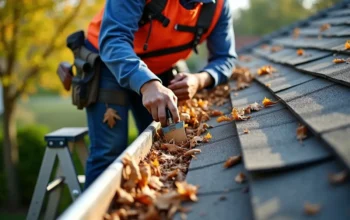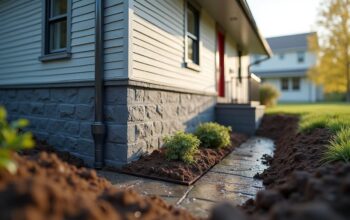
Pest and environmental safety is a growing concern among homeowners, farmers, and public health officials worldwide. Whether you manage a small garden or oversee large-scale agricultural fields, it’s essential to find effective ways to protect crops and buildings while safeguarding the environment. This balance can be challenging, especially with the wide variety of chemical products available today. However, there are strategies and techniques that provide better solutions for both immediate pest issues and long-term environmental health.
Contents
The Importance of Responsible Pest Management
Responsible pest management helps reduce harm to the surrounding ecosystem. Applying pesticides without proper caution can damage local flora and fauna, threatening biodiversity in the process. It also increases the risk of chemical exposure in the air, water, and soil, which can harm human health. By focusing on environmental protection when dealing with insects and rodents, it’s possible to balance productivity with caution.
Impacts on Environmental Protection
Unchecked pest activity can lead to significant losses in crops and stored food products. In the race to maintain yields, some people turn to harsh chemicals that eradicate pests swiftly. Yet these substances can linger in the environment much longer than intended. They may also push away beneficial creatures like natural pest predators or pollinators. This reduces the resilience of local ecosystems, eventually making them more susceptible to pest invasions.
Emphasizing sustainable agriculture in pest management can help keep soil quality high and encourage the presence of valuable organisms. Natural pest deterrents and eco-friendly pesticides are less disruptive to beneficial insects or helpful bacteria. They break down more quickly and don’t pose the same risks to wildlife or water quality as some older chemical products do. Protecting farmland in this way builds healthier ecosystems and benefits neighboring communities.
Effects on Public Health
Pesticides and safety go hand in hand, especially in spaces where families, children, or the elderly live. High chemical loads in and around a home can contribute to breathing difficulties, skin irritation, or more serious ailments. By practicing integrated pest management and selecting environmentally safe products, it becomes easier to limit synthetic exposure and reduce potential toxicology issues. Proper pest prevention helps keep living areas safe and fosters a sense of well-being among residents.
Effective Eco-Friendly Pest Control Methods
Transitioning from traditional pesticides to greener alternatives often requires a multifaceted approach. When done well, it not only addresses immediate pest problems but also ensures long-term environmental sustainability. Some methods can be implemented on a small scale at home, while others are perfect for larger farms or industrial settings.
Integrated Pest Management Essentials
Integrated pest management (IPM) remains a fundamental concept for effective control. It combines multiple tactics—biological, cultural, mechanical, and chemical—to tackle pests throughout their life cycles. IPM starts by monitoring pest populations and identifying harmful species management solutions. Only when thresholds are reached do targeted approaches such as carefully selected pesticides become part of the strategy. This helps maintain a balance between controlling pests and preserving vital resources like soil and water.
In IPM, pest prevention is a key pillar. Farmers and homeowners can use techniques like altering planting patterns, rotating crops, or ensuring good building hygiene to deter insects and rodents. Such measures limit the need for corrective treatments later.
Choosing Eco-Friendly Pesticides
Green pest control methods rely on products that degrade quickly and pose minimal risk to humans, animals, and plants. These eco-friendly pesticides are often derived from natural sources and offer a reduced impact on biodiversity. Compared to older synthetic solutions, they often focus on organic farming principles by avoiding harsh chemicals that can accumulate in groundwater or nearby streams.
Certain organic-based sprays might target specific insects without harming pollinators or other beneficial wildlife. More advanced formulations use ingredients that break down rapidly, thus lowering the chance of pollution. By reading labels, understanding pesticide regulation guidelines, and consulting experts, it’s possible to make informed choices that support both pest control and environmental health.
Embracing Sustainable Pest Control Strategies
Sustainable pest control goes beyond short-term fixes. It seeks to protect future harvests and human health by minimizing negative ecological impact. Small changes can make a big difference. For instance, farmers can opt for physical barriers like nets or row covers to keep pests off plants, greatly reducing the need for chemical intervention.
Non-Toxic Pest Solutions Around Buildings
In urban pest control situations, rodents and insects often gather in or near buildings. Keeping these areas clean, sealed, and clutter-free limits their potential hiding spots. Coordinating rodent control with non-toxic pest solutions, such as traps designed for humane capture, helps reduce the amount of synthetic substances. Implementing proper waste management further discourages vermin from settling close to human dwellings.
Insect management around buildings is also critical. Using pest prevention techniques like sealing cracks, managing water leaks, and maintaining clear drainage systems stops infestations before they start. For homeowners who need additional measures, biological pest control methods such as introducing beneficial organisms can be effective if chosen properly.
The Value of Building Hygiene
Simple practices like regular cleaning and sealing entry points help manage infestations at the source. Mice, rats, or ants often slip in through small gaps, so focusing on building integrity is the first line of defense. Storing food in airtight containers and clearing out garbage daily removes key attractions for pests. Addressing moisture issues in basements or crawl spaces stops insects like cockroaches or termites from multiplying. These actions ensure that pest populations remain manageable and reduce the reliance on heavy chemical use.
The Role of Biological Pest Control in Harmful Species Management
Biological pest control harnesses the power of certain organisms to keep harmful species in check. Introducing predators, parasites, or even specific bacteria can lower populations of pests without resorting to widespread pesticides. Ladybugs, for instance, are known to devour aphids at an impressive rate. Meanwhile, certain bacterial products target soil-dwelling pests, leaving beneficial insects unharmed.
Working With Natural Pest Predators
Farmers and gardeners often encourage birds, frogs, or other small creatures that thrive on troublesome insects. By creating or preserving habitats, they invite these creatures to stay, reducing the chances of pest outbreaks. This approach ties directly into habitat conservation practices and can be part of a larger strategy aligned with agricultural ecology.
Biological controls require patience and knowledge. In some cases, newly introduced predators might not adapt perfectly to local conditions. However, when done responsibly, this strategy can dramatically cut down on pesticide usage. Over time, it fosters a balanced system where each species plays its part in controlling others, making it more resilient to external shocks.
Balancing Risks and Rewards
Although biological methods hold great promise, care must be taken to avoid unintended consequences. Introducing a new species or microorganism without thorough research can disrupt local ecosystems. It’s important to consult environmental regulations and experts who specialize in matching the right control agent to the target pest.
Harmful species management is an ongoing process, meaning consistent monitoring and adaptation. Each environment has unique conditions that influence pest prevalence. By respecting these nuances, practitioners of biological methods can collaborate with nature rather than work against it.
Progress Through Awareness and Adaptation
Advancements in science and technology offer creative solutions for those committed to sustainability. Modern labs are rapidly developing safer chemical formulations, while drones and smart sensors help detect infestations early. These innovations support both rural and urban pest control efforts by providing precision and reducing waste.
Policy changes are also key drivers of progress. Many governments enforce stricter environmental regulations to limit pollution and preserve wildlife safety. Consequently, safer products become more accessible, reflecting society’s shift toward solutions that don’t undermine human health. Meanwhile, communities gain more knowledge of pesticide regulation and begin to demand transparency from manufacturers. All these elements encourage a collective effort to protect our shared environment.
Staying informed helps households and businesses adapt their pest control strategies quickly. They can access current data on pest trends, invest in non-toxic pest solutions, and practice integrated pest management. The overall result is a healthier environment for everyone. Pollution drops, toxic residues lessen, and valuable species remain protected, reinforcing environmental sustainability in our neighborhoods and farms.
Promoting pest and environmental safety ultimately benefits both humans and the broader ecosystem. By choosing methods that align with ecological impact and sustainability goals, individuals and organizations help safeguard the resources we depend on. Through a mix of proactive approaches, mindful pesticide usage, and continuous learning, pests can be managed responsibly while prioritizing the well-being of people, plants, and wildlife.



